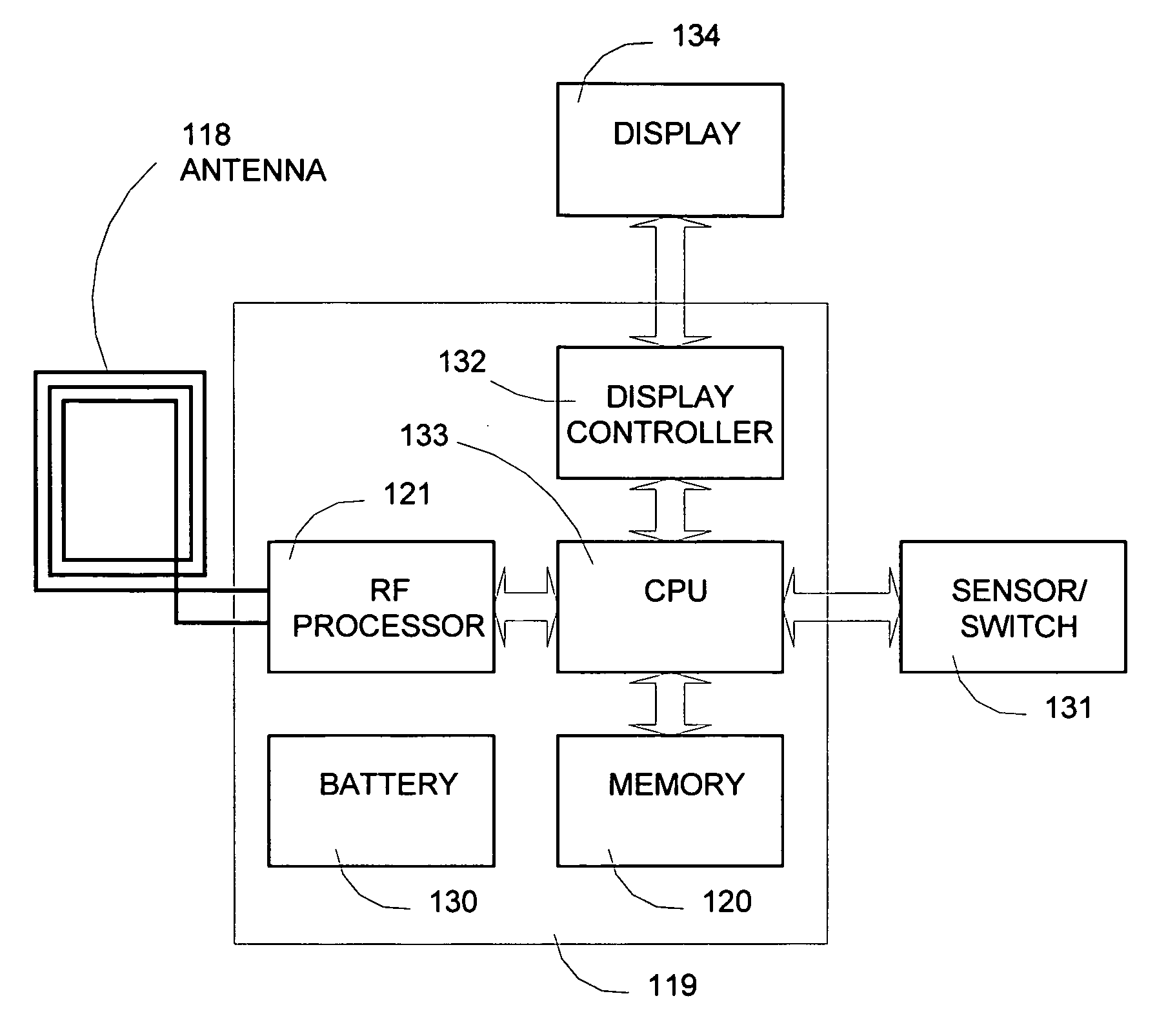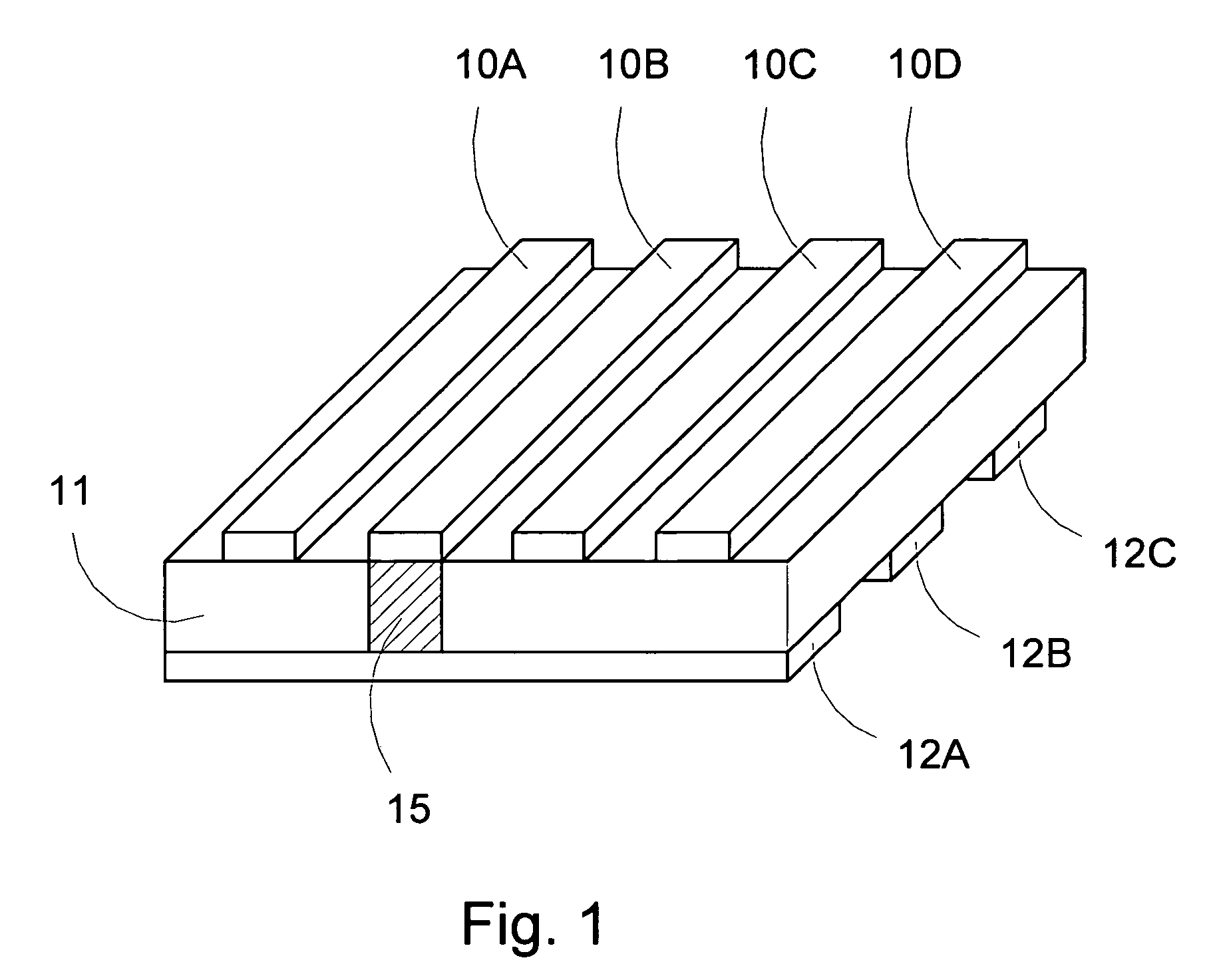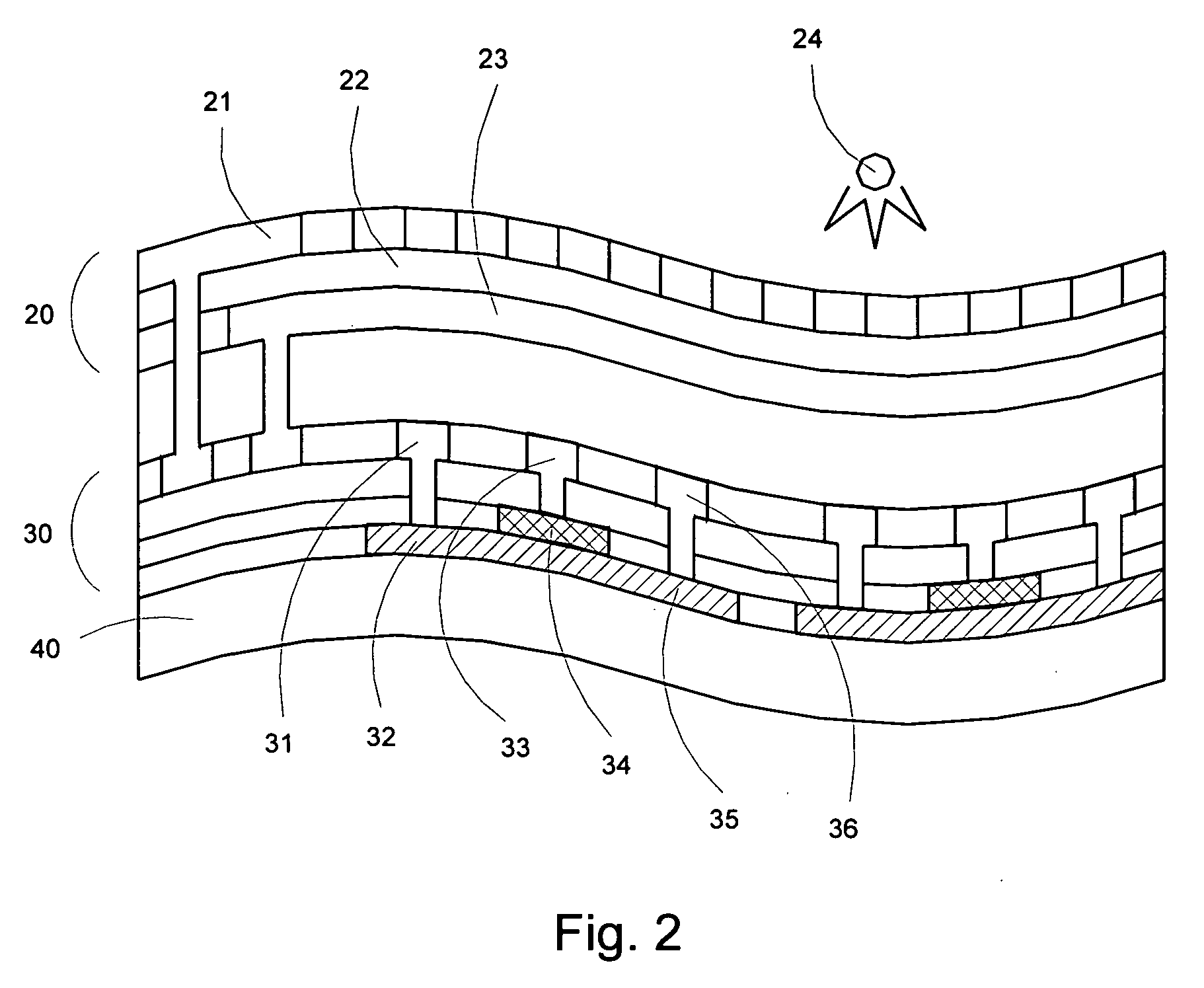Thin film non volatile memory device scalable to small sizes
a memory device and thin film technology, applied in the field of thin film non volatile memory devices, can solve the problems of insufficiently addressing these needs, brittleness, and high cost of 5 per tag, and achieve the effect of making small memory arrays economically, thin, inexpensive and robust devices
- Summary
- Abstract
- Description
- Claims
- Application Information
AI Technical Summary
Benefits of technology
Problems solved by technology
Method used
Image
Examples
Embodiment Construction
[0018] Thin film silicon technology, in which thin film transistors are fabricated on plastic substrates, is reasonably well known and well documented. The thin film transistors (TFTs) resulting from these processes, which use amorphous silicon (a-Si) as the active semiconductor material, are suitable for general computational operations as well as other applications such as display switching elements. They can be used to read and write information from EEPROM cells, for example, as well as to make oscillators and logic gates. Because they are fabricated on plastic substrates, the process is amenable to adaptation to roll-to-roll processing with attendant cost reductions, and the substrate can be sufficiently thin that it is easily accommodated in the thin RFID devices and smart tags or cards which are the primary (though not exclusive) focus of this invention.
[0019] The prior art memory cells, while satisfactory to store digital information, do not meet the needs of the applicatio...
PUM
 Login to View More
Login to View More Abstract
Description
Claims
Application Information
 Login to View More
Login to View More - R&D
- Intellectual Property
- Life Sciences
- Materials
- Tech Scout
- Unparalleled Data Quality
- Higher Quality Content
- 60% Fewer Hallucinations
Browse by: Latest US Patents, China's latest patents, Technical Efficacy Thesaurus, Application Domain, Technology Topic, Popular Technical Reports.
© 2025 PatSnap. All rights reserved.Legal|Privacy policy|Modern Slavery Act Transparency Statement|Sitemap|About US| Contact US: help@patsnap.com



